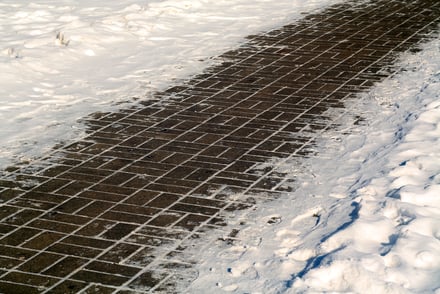As you settle into winter, there may not be too many thoughts of home repairs or improvements running through your mind. However, if you’ve been considering exposing some interior brick walls or repairing interior brickwork, winter happens to be an excellent time to get the job done. Taking care of interior tuckpointing now removes a major item off your to-do list, keeps the structural integrity of your walls in top shape, and provides a warm atmosphere. Brickwork is definitely not a DIY project, so consulting with an historic brick expert will ensure everything goes according to plan - and you’ll soon realize why winter is the perfect time for interior tuckpointing.
The Problem with Plaster
While many consider the interior brick of historic homes a design asset, the opposite was true when they were first built. Covering up the brick on the interior of the house was a routine part of the construction. Plaster attached to old interior brick is usually very thick and can remain tightly bonded to the brick. Removing it takes patience to protect the brick beneath. Once the plaster is removed, the next step is cleaning the interior brick, a time-consuming process requiring great care.
An expert in historic brick can determine the condition of the brick structure, repair or replace damaged brick with historically accurate methods, and, most importantly, repair the wall’s structure with proper interior tuckpointing. This is not typical masonry work—it requires the expertise of a historic restoration craftsperson to prepare and tuckpoint the wall so it can be returned to its original condition.
Plaster Plus Drywall is Even More Complicated
Once the drywall is up, it is nearly impossible to tell what is happening behind the walls. In some cases, the plaster was removed when the studs were installed. In other situations, it was not. The drywall is sometimes anchored directly to the brick or through the plaster and into the brick. Even if studs are present, how they are anchored affects the approach to plaster removal and interior tuckpointing. This rather tricky situation really does require a professional to determine what is going on behind the drywall before tearing the wall apart.
Maintaining Already-Exposed Historic Brick Walls
Unlike modern homes where bricks are placed around the structure, in your historic home, the brick is the structure. In addition to adding an interesting architectural feature and warm, inviting rooms, those beautiful walls are how your house remains standing! For this reason, it’s crucial to do routine checks of the brick and mortar and have a historic brick expert provide a professional inspection at least once a year. Minor problems are usually easily corrected, and regular inspections can certainly prevent major repairs from being needed down the road.
It’s so important to use historically correct lime-based mortar mixes and delicate craftsmanship to maintain and restore your old brick walls. Unfortunately, modern products and methods do not mix well with historic brick walls; if they are used, there are consequences. The brick will soon show signs of deterioration and damage. Interior tuckpointing experts will assess and repair your walls while always ensuring that safe methods are used for cleaning and sealing interior brick. Their expert care will keep your interior brick walls looking their best for a long time to come.
Renaissance Development, a leader in brick restoration and historic preservation, specializes in the restoration of a historic brick building’s mortar joints using traditional methods (tuckpointing) and materials. Contact us for a free site visit and project quote.
Jan 13, 2023 10:30:00 AM


